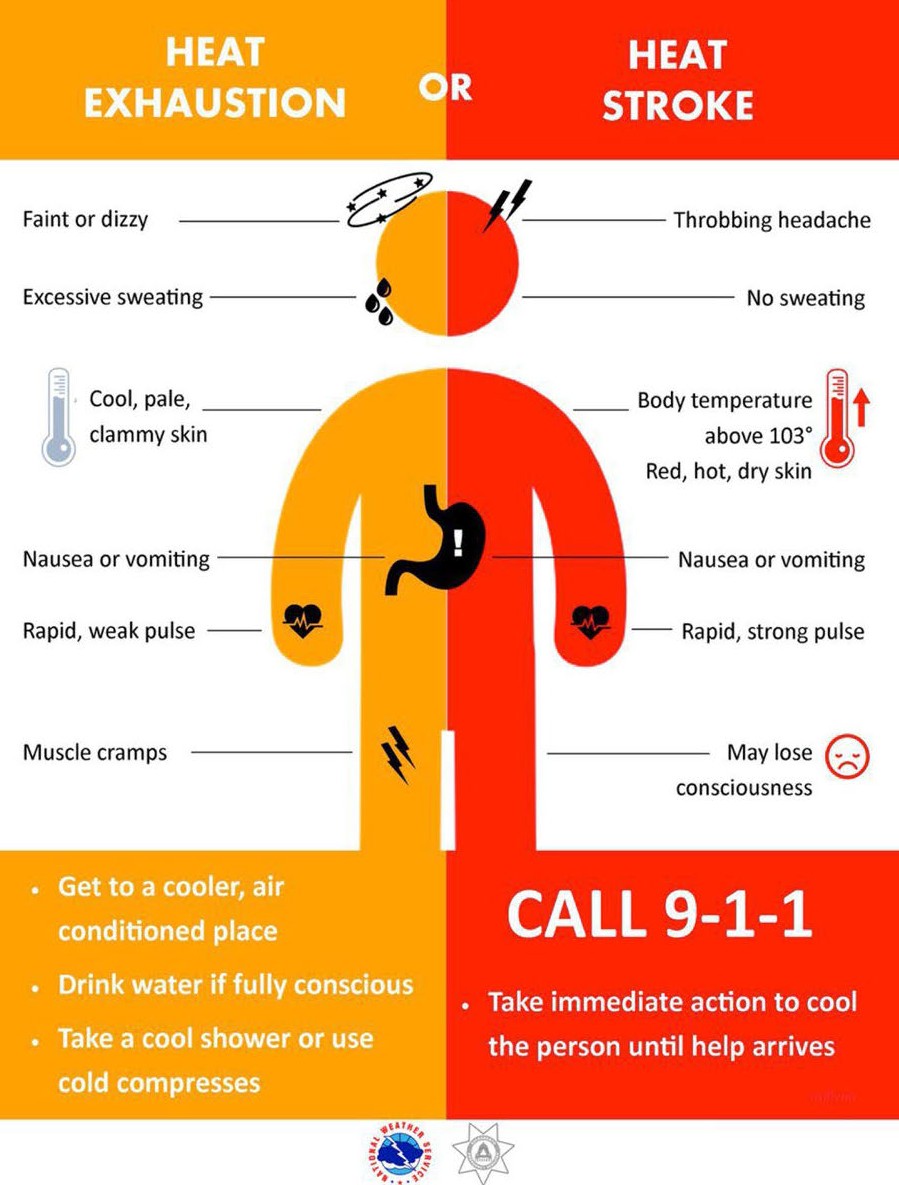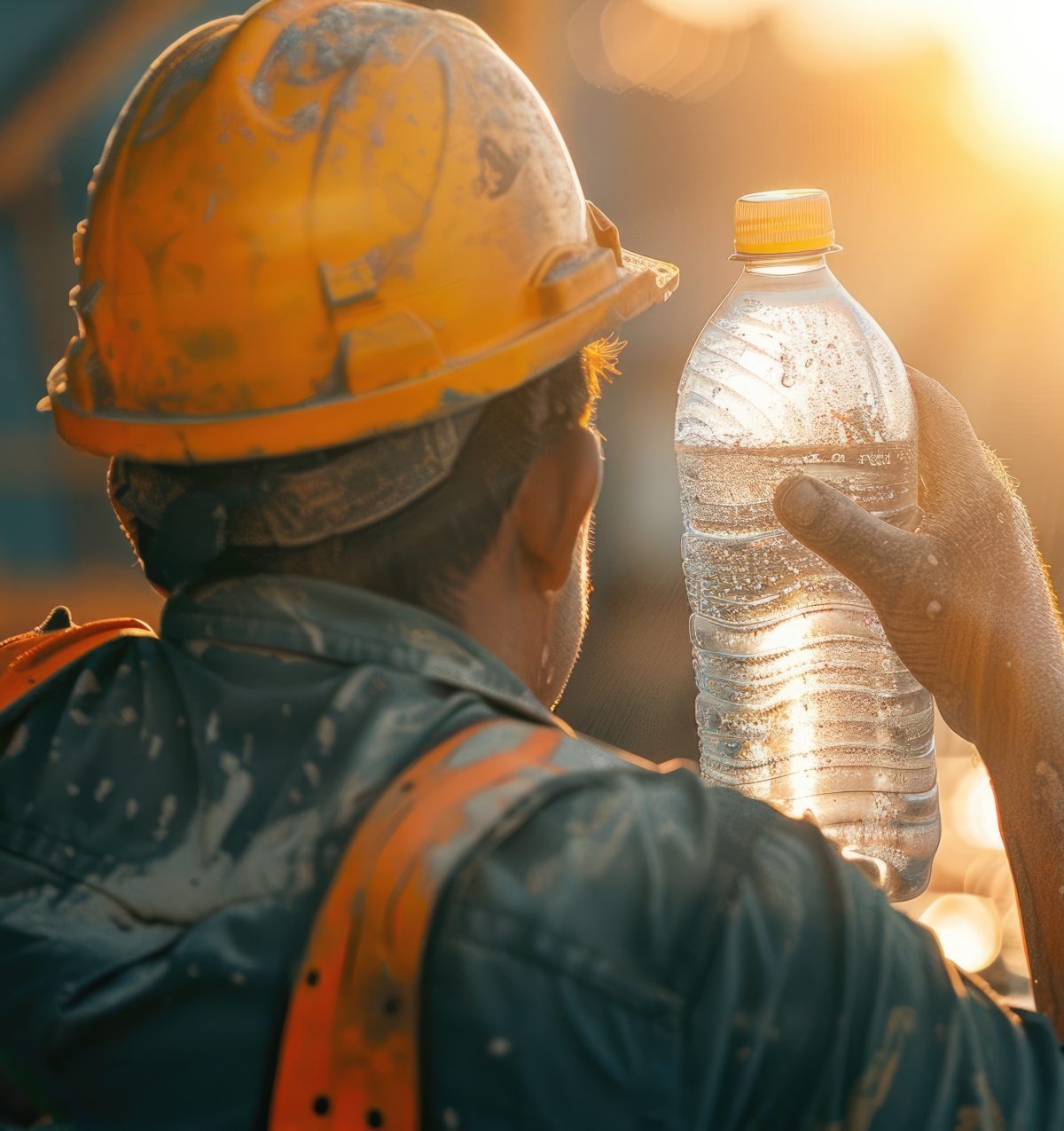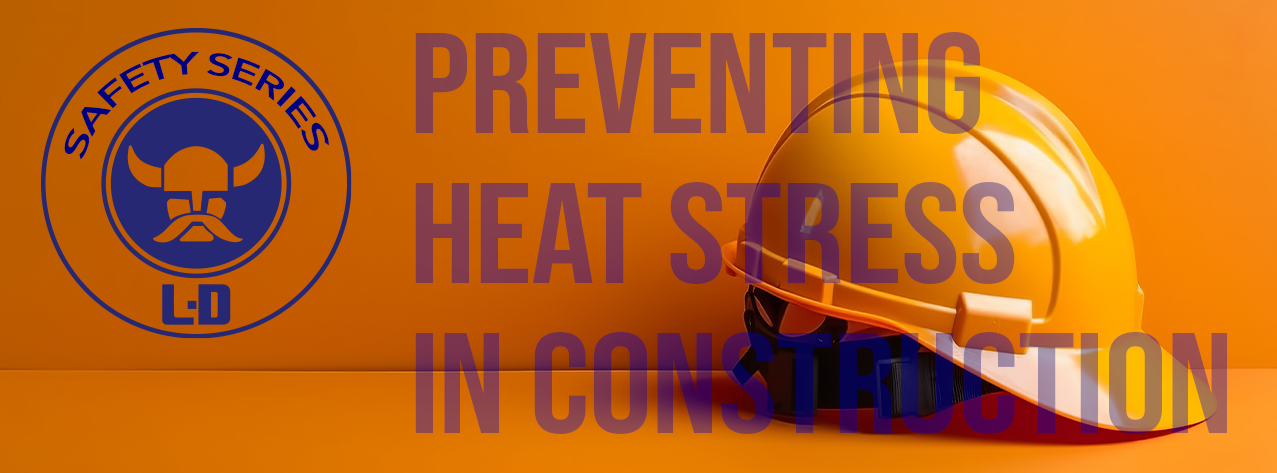Contributed by: Tom Klochan, Safety Coordinator
Why Heat Stress is a Serious Risk for Construction Workers
Hot summer months pose special hazards for workers. Construction workers are prone to heat stress in various work settings, such as rooftops, or in open excavation sites which may lack air movement.
Heat related illness may initially manifest itself as a rash or cramps but can quickly escalate to heat exhaustion and heat stroke if prevention measures are not implemented and followed.
Heat stress occurs when the body is unable to cool itself by sweating. This stress can lead to heat-related illnesses.
Common Symptoms of Heat-Related Illness
Symptoms of Heat Exhaustion:
- headache
- dizziness
- lightheadedness
- fainting
- weakness and moist skin
- mood changes
- irritability
- confusion
- nausea and vomiting
Heat Stroke symptoms:
- dry hot skin with no sweating
- mental confusion or loss of consciousness
- seizures or convulsions
- Body temperature above 103°F
Heat stroke is a medical emergency and can be fatal. If heat stroke is suspected, call 911 immediately.

Prevention Strategies for Heat Stress on the Jobsite
Prevention of Heat-Related Stress and Illness has many applications. It is important to know the symptoms of these Illnesses and recognize them early.
The best defense is prevention. Crews should follow these safety practices:
- Block out sun or any other heat sources.
- Utilize fans or air conditioning units.
- In high heat, drink a cup of water every 15 minutes. You can add electrolyte replacement drinks too.
- Wear lightweight, light-colored, loose-fitting clothes.
- Avoid eating heavy meals, alcohol and caffeine drinks (which can make the body lose water).
- Schedule more strenuous work during the coolest time of the day.
- Always have crews work in pairs (buddy system).
- Rotate workers in and out of hot areas if possible.

Acclimatization: Building Heat Tolerance Safely
Acclimatization to the heat takes time. To achieve this, adjust the workers’ time and work activities gradually. This is crucial practice. Almost half of heat-related deaths occur on a worker’s first workday. Over 70 percent of heat-related deaths occur during a workers first week.
A work schedule will gradually build up heat tolerance to assist workers in managing the heat. Have new and temp workers only spend about 20% on the first day doing intense activities and spend the other time with training and light duty work. Increase the workloads each day an additional 20%. This gradual increase will help the employees begin adjusting to the work environment.
Who Is Most at Risk for Heat-Related Illness?
While all workers in hot conditions face risks, some groups are more vulnerable:
- All individuals who work in hot and/or humid environments either inside or outside
- Those that perform heavy physical labor and work activities
- Those that do not consume enough water (fluids) before and during work activities
- Workers wearing PPE such as respiratory protection, Tyvek suits, and welding hoods
- Workers that take blood thinner medication, heart medication, or other health issues
- Heavy smokers, and drinkers
- Elderly workers or family members

Heat-Related Disorders and First Aid
Heat Rash – Small, itchy bumps or blisters. Treat by cooling skin with a cold cloth or ice pack and avoiding perfumed soaps or lotions.
Heat Cramps – Painful spasms in legs or abdomen with heavy sweating. Treat with rest, gentle massage, and small sips of water.
Heat Exhaustion – Symptoms include dizziness, weakness, nausea, and pale, clammy skin. Move to a cool area, loosen clothing, and drink fluids.
Heat Stroke – Life-threatening emergency. Symptoms include confusion, seizures, and a body temperature above 103°F. Call 911 immediately and cool the worker until help arrives.
Tools and Resources for Heat Safety
Employers and workers can take advantage of free safety tools:
-
OSHA-NIOSH Heat Safety Tool App: Provides real-time heat index updates and risk levels by location.
-
CDC Heat-Related Safety Posters: Great for posting around jobsites to remind crews of symptoms and prevention steps.
Final Thoughts
Remember, heat stress and related issues begin when high temperatures and/or humidity cause workers’ bodies’ natural cooling mechanisms to become ineffective, and the body core temperatures rise.
Heat stress is preventable. With the right training, resources, and awareness, construction companies can protect their workers, reduce risks, and keep projects on track. By prioritizing hydration, acclimatization, and teamwork, every crew can stay safe in the summer heat.
Frequently Asked Questions About Heat Stress in Construction
What is the difference between heat exhaustion and heat stroke?
Heat exhaustion is the body’s warning sign and includes dizziness, nausea, sweating, and weakness. Heat stroke is a medical emergency marked by confusion, seizures, and a body temperature above 103°F. Call 911 immediately if heat stroke is suspected.
How can construction workers prevent heat stress?
Workers should stay hydrated, take breaks in shaded or cool areas, wear lightweight clothing, and gradually adjust to working in the heat. Employers should provide water, rest schedules, and training on heat safety.
Who is most at risk for heat-related illness?
New workers, those wearing heavy PPE, individuals with health conditions, older workers, and those who don’t hydrate properly are most at risk. Gradual acclimatization helps reduce danger.
What should employers do if a worker shows signs of heat stress?
Remove the worker from the hot environment, provide cool water, loosen clothing, and call medical services if symptoms are severe or suggest heat stroke.
Are there tools to monitor heat risk on jobsites?
Yes. The OSHA-NIOSH Heat Safety Tool App provides real-time heat index levels and recommendations based on jobsite location, helping employers and workers plan safe schedules.

